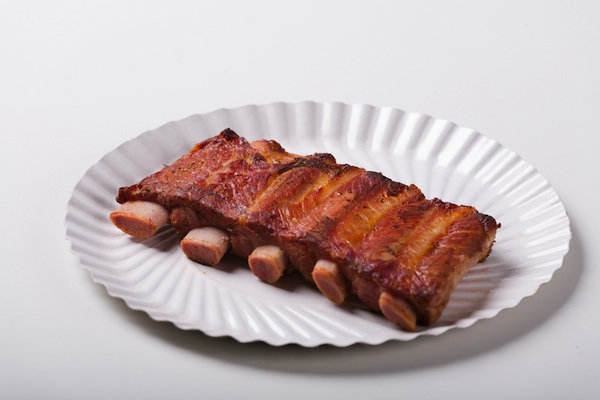The china said it all.
When Bonnie Taub-Dix, RDN and author of “Read It Before You Eat It,” inherited her husband’s great grandmother’s antique china, she unpacked a lot of salad plates, but was miffed when the dinner plates were nowhere to be found. She called her aunt, who had long been steward of the china, to investigate. Turns out, the salad plates were the dinner plates.
“The dinner plates from the 1920s were like our salad plates today,” said Bonnie. “They just don’t compare to the giant plates at restaurants.”
Portion size has grown exponentially over the last 100 years. Factors like plate size, familial dynamics, and monetary investment in our food have contributed to an increased average portion size, and in turn, made America fat.
Bonnie was quick to point out that at fancy restaurants, the plate sizes are smaller, and customers tend to value those limited portions more because of the high cost. On the flip side, diners, drive ins, and dives are serving up “brontosaurus bones” on the cheap. No matter the price, people are going to eat what’s in front of them because if they paid for it, they’re gonna finish it. And Americans love to get more bang for their buck. “Value is very often associated with volume,” said Bonnie.
“If you feel like you have to eat as opposed to choosing to eat, then you belong to the ‘clean-plate club’ and it’s time to cancel your membership,” she told us.
Eating meals as a family—once a slow, appreciated, and conversational event—has nearly disappeared from our over plugged-in culture. Our resident nutrition expert, Mary Hartley, RD, claims this seismic shift began about 35 years ago. “Between 1977 and 1991, the number of eating establishments in the U.S. increased by 75 percent,” she said. “The public came to expect cheap or reasonably priced food served in large quantities.” The prevalence of snacking and a demand for on-the-go meals have also pushed family meals out of the dining room and expanded America’s waist line.
Hunger can do funny things to a person. After a few hours without food, people tend to eat irrationally and ravenously, leading to bloating, fatigue, and guilt. “We eat with our eyes, we eat with our mouths, many of us eat with our wallet. One thing that we’re not eating with is our stomach,” said Bonnie. The stomach is about the size of two clenched fists. “Imagining the amount of food that would fit in a pouch that big is an important visualization,” said Bonnie.
Both Bonnie and Mary preach the importance of portion control in weight loss. And unless you’re tuned in to your mind and body’s relationship with food, you may never know you’re eating too much. “There is a well established phenomenon of unknowingly eating larger amounts when presented with larger portions,” said Mary.
To prevent eating too large a portion, Bonnie recommends eating slowly and putting your fork down between each bite. Also, “Don’t take a large portion to begin with; you can always go back for more.”
She also reminds people there is no miraculous or instant weight loss diet. “Weight loss is all about portion control,” said Bonnie. “Miracles don’t happen at the plate.”
Also Read:
The 5 Worst Things Paula Deen Ever Did to Food
Long John Silver’s Big Catch is the Worst Meal in America Title
The Color of Cutlery and How it Affects What We Eat

